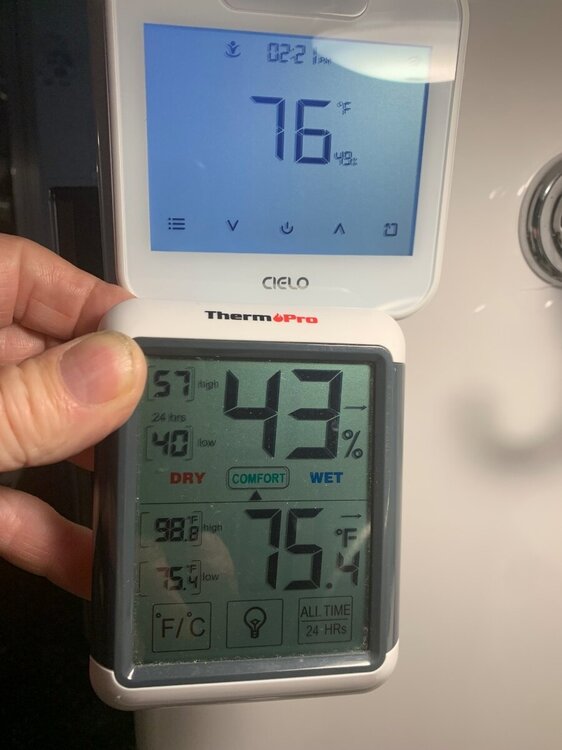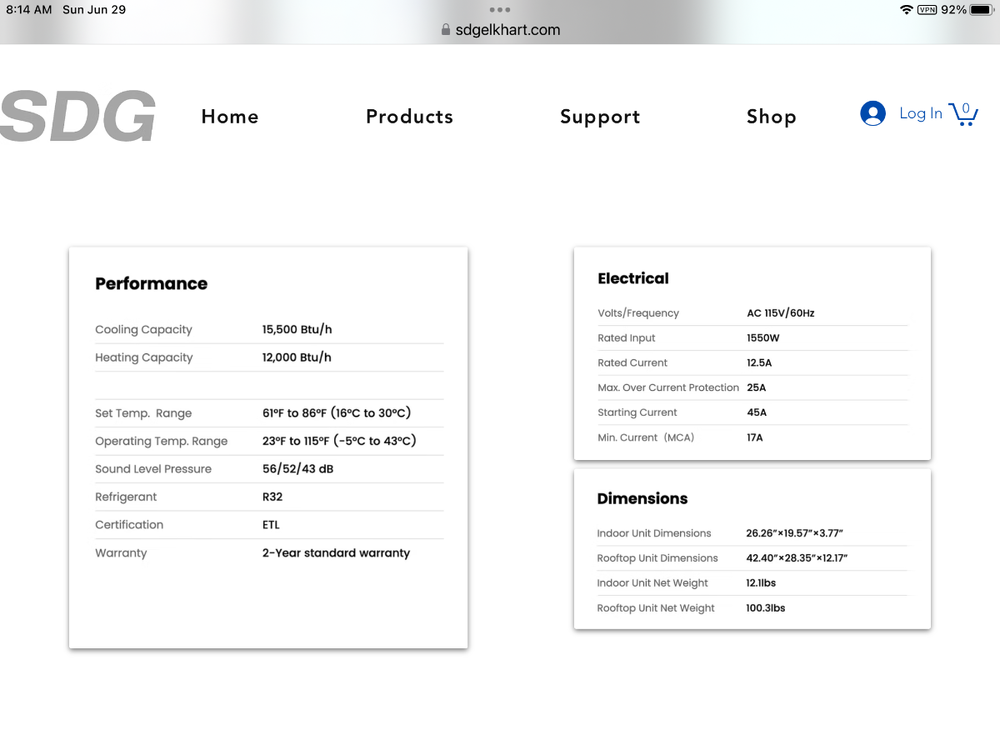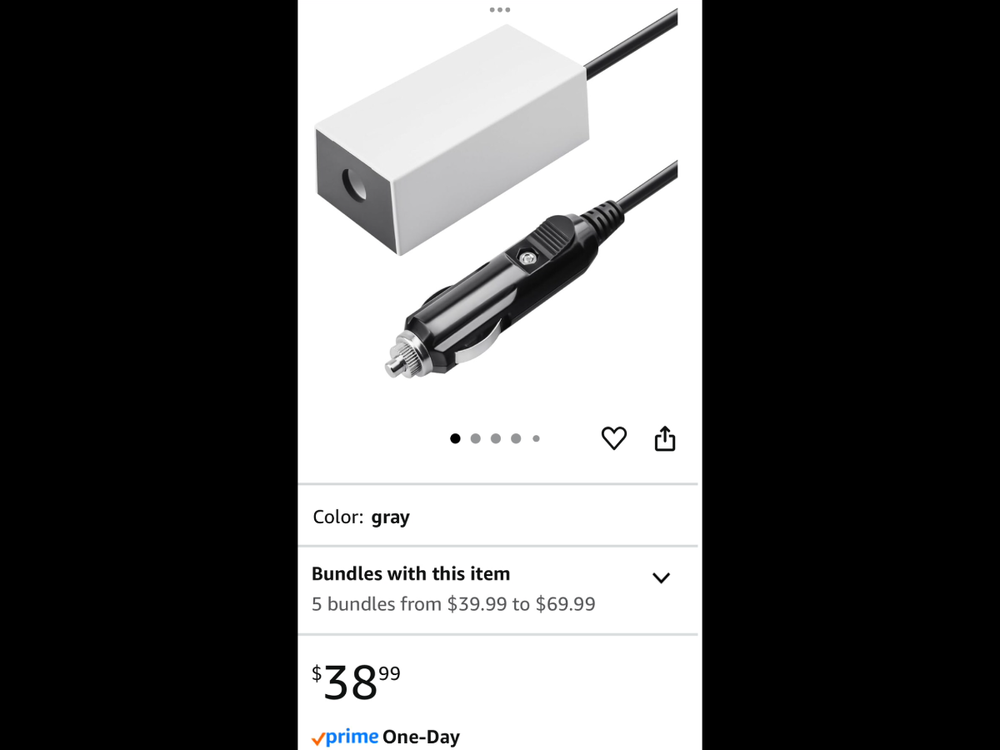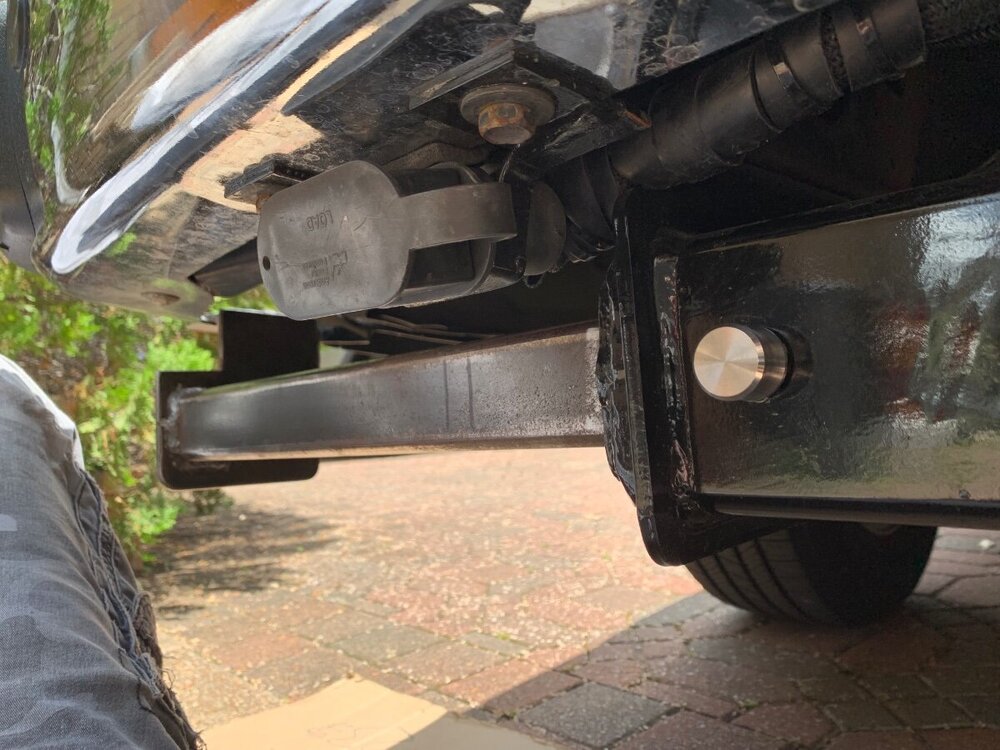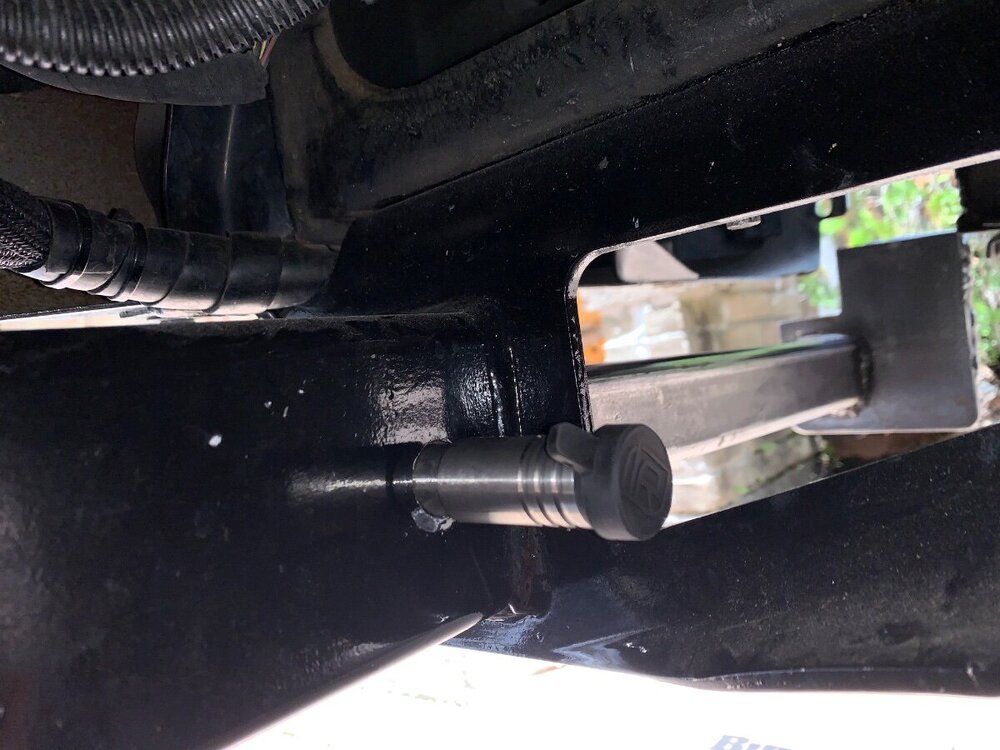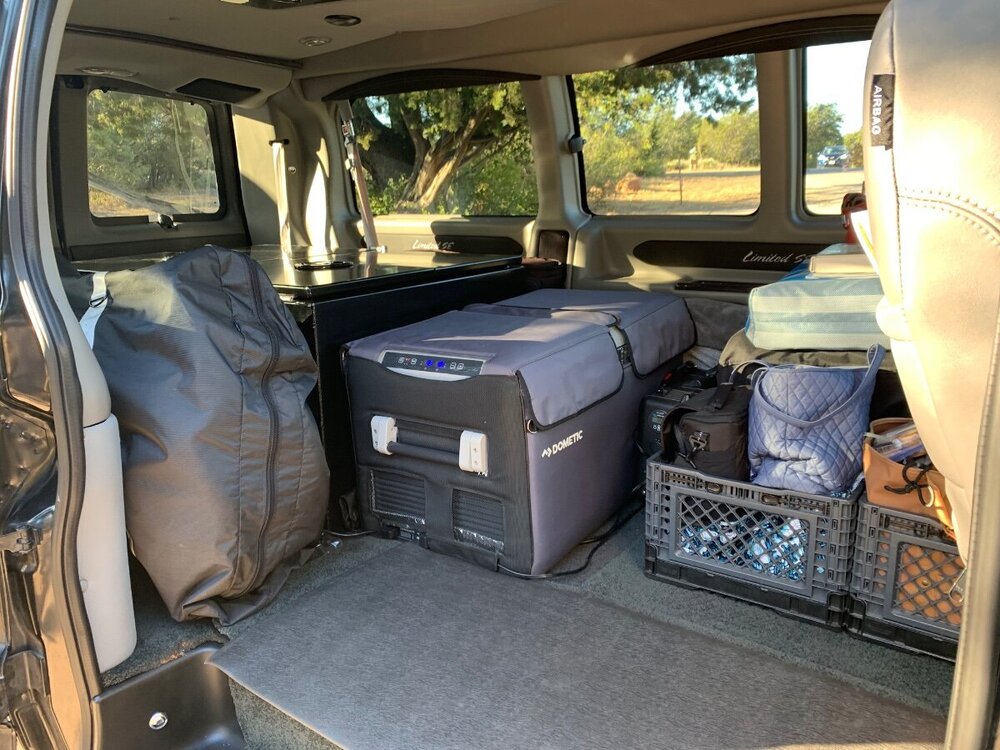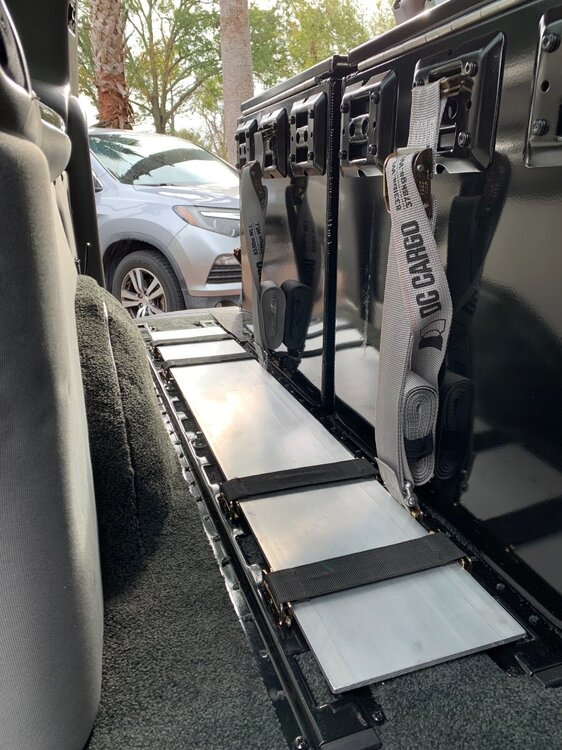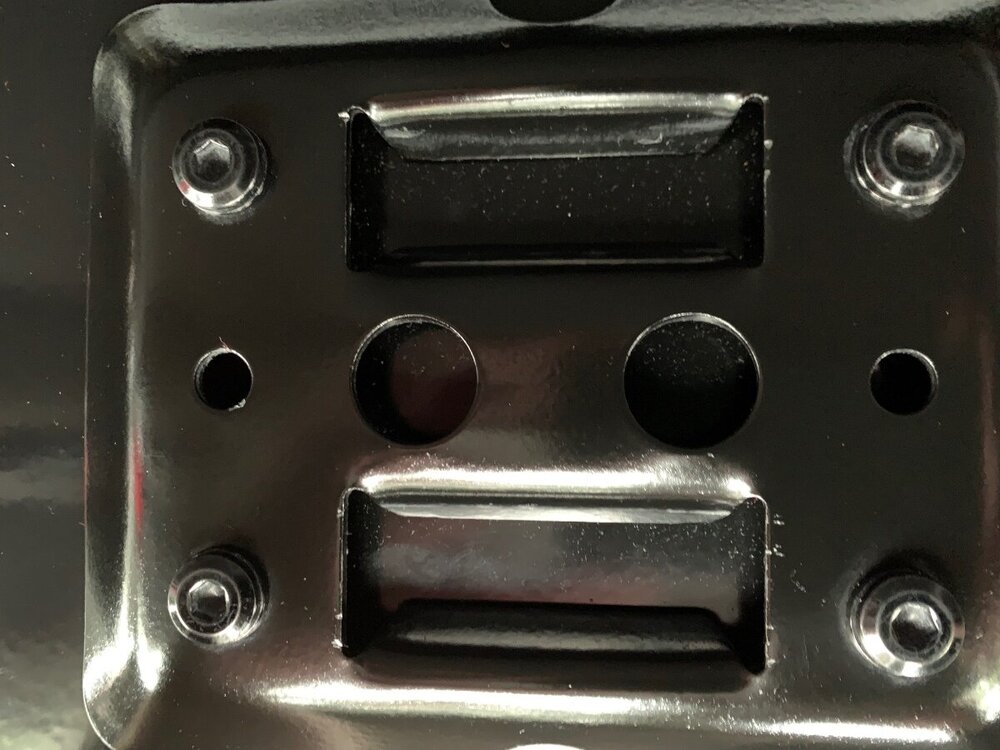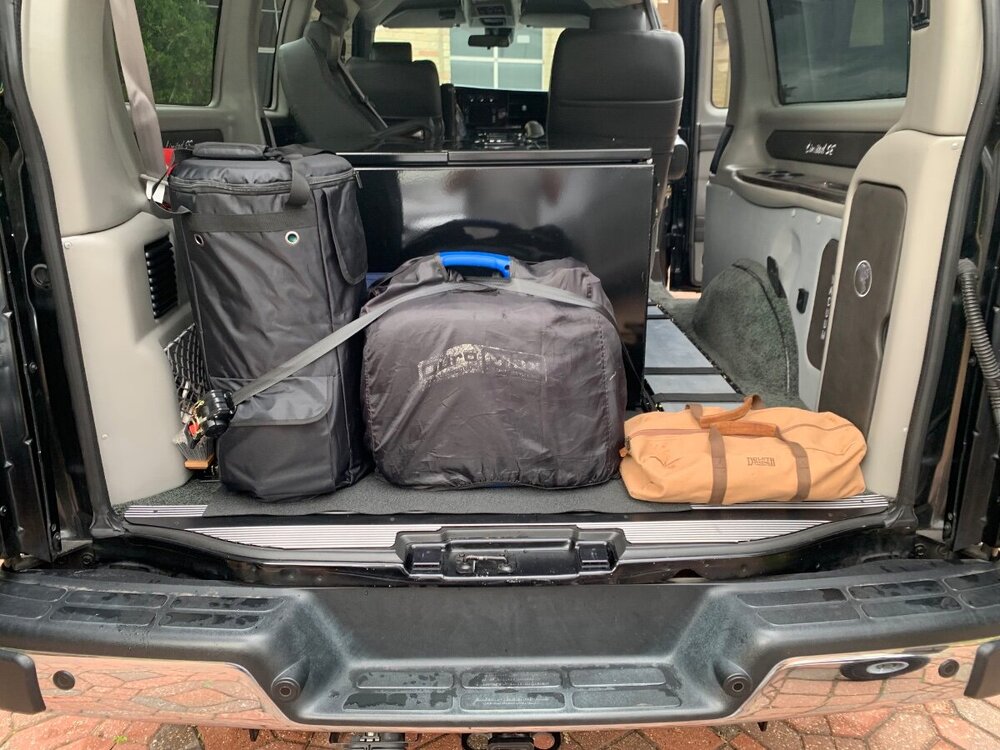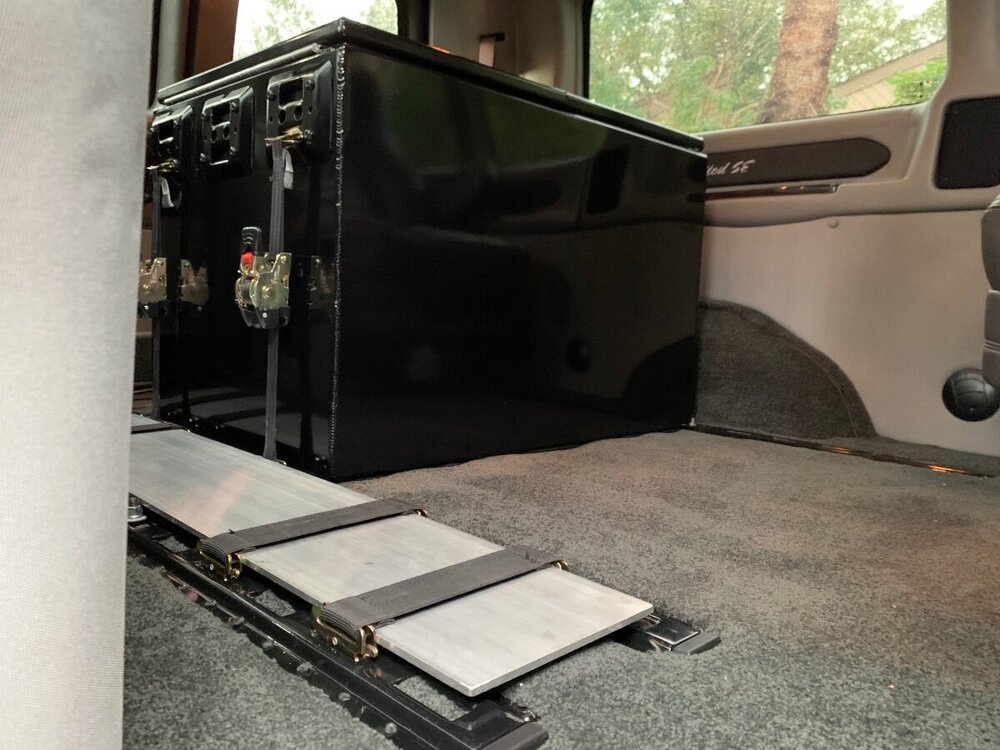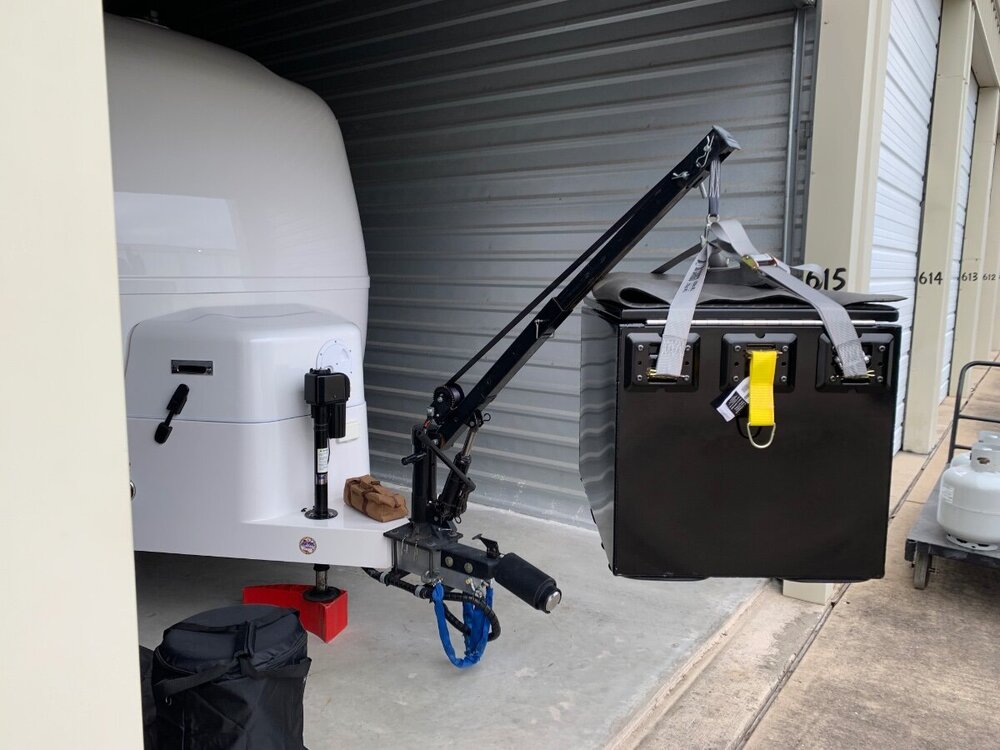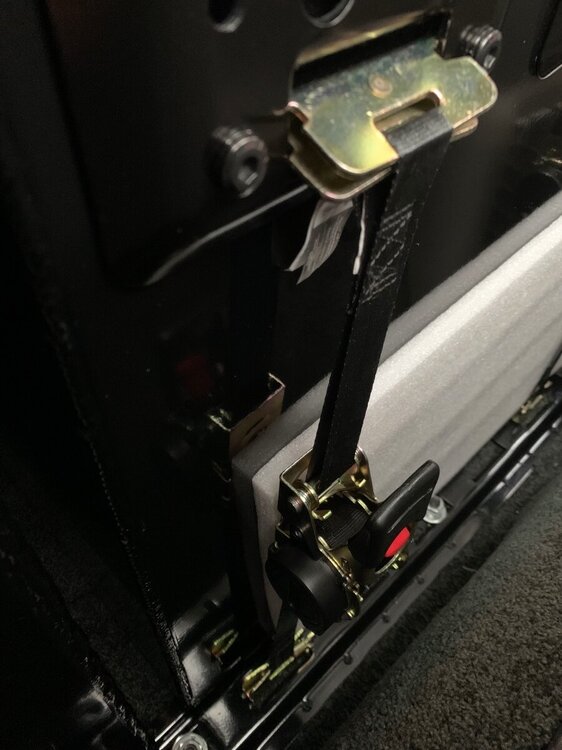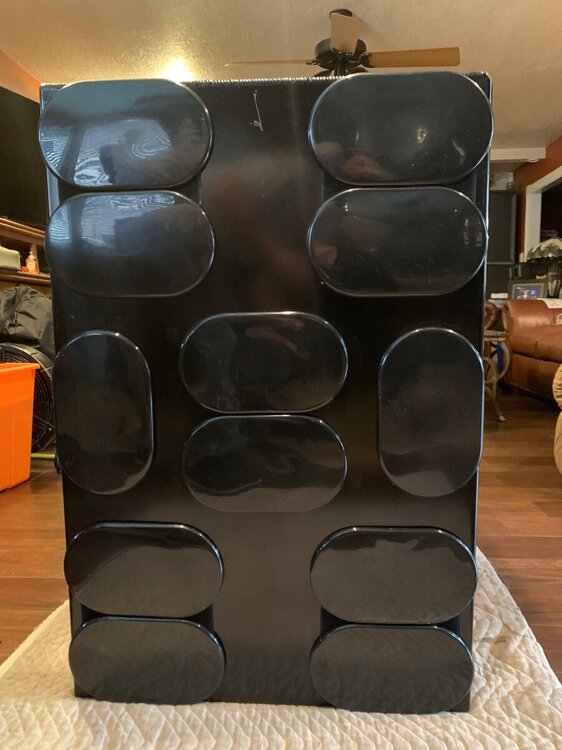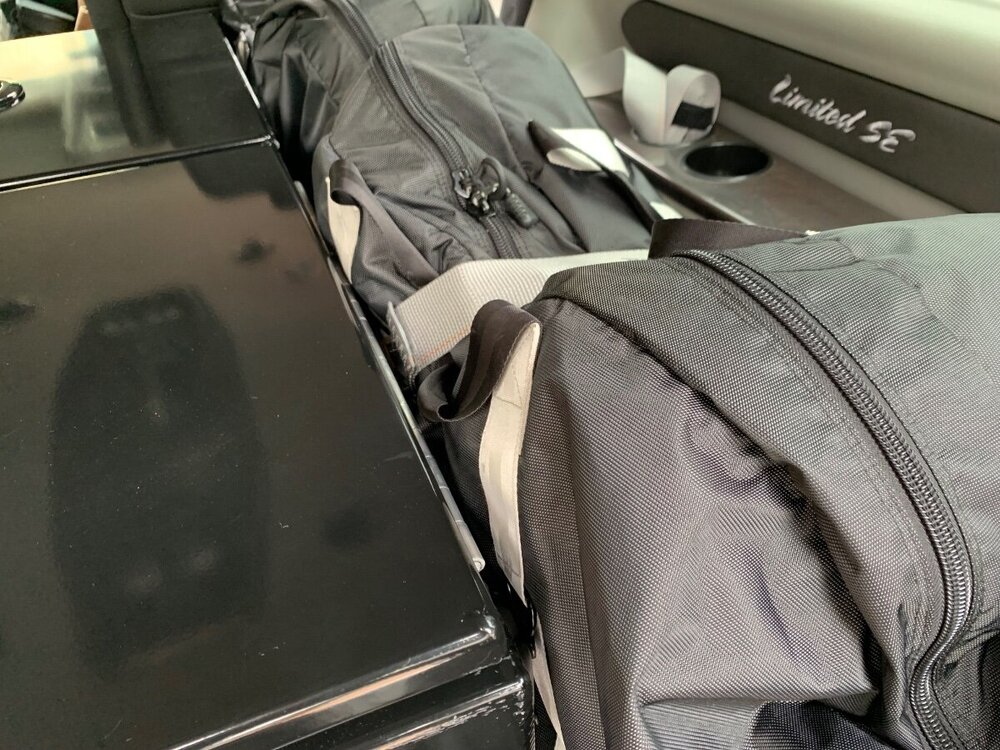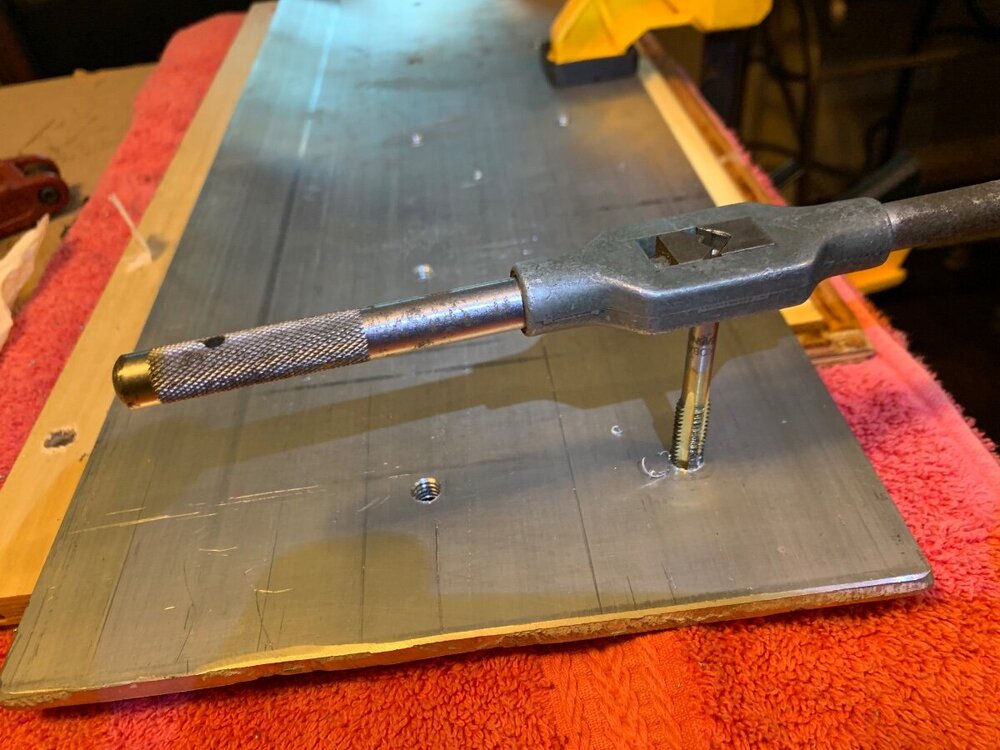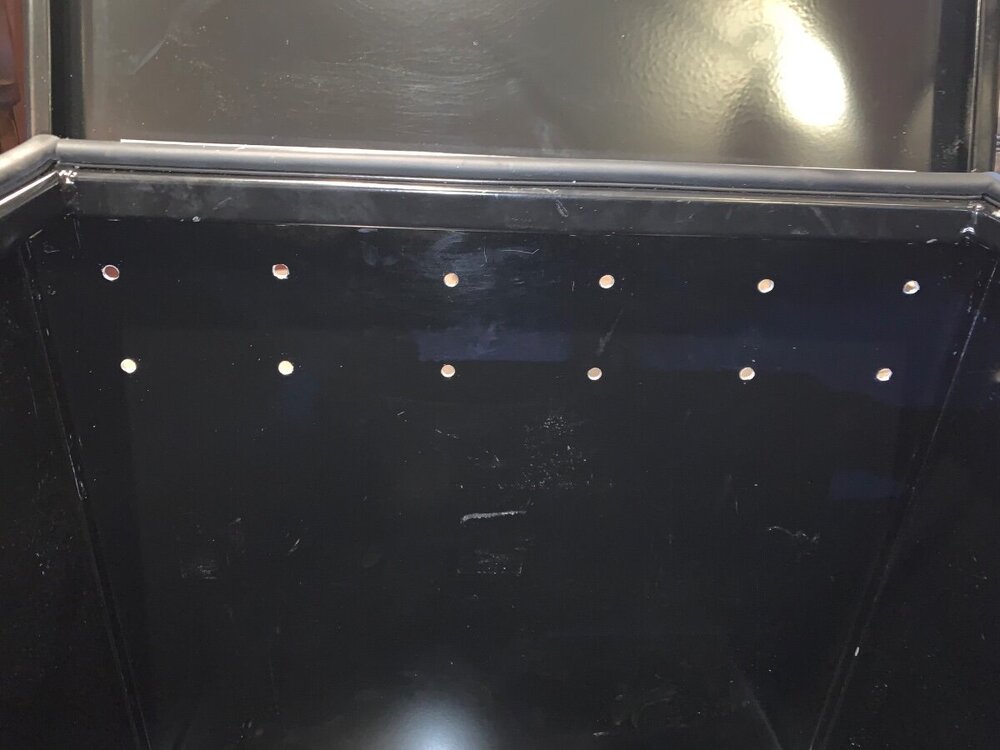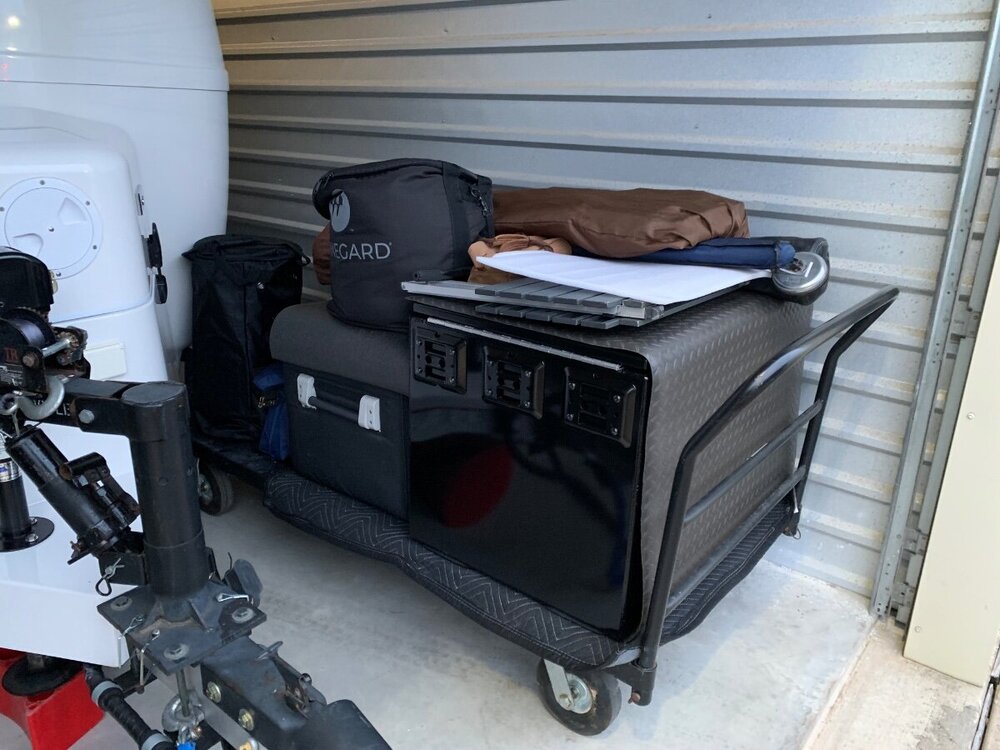-
Posts
1,075 -
Joined
-
Last visited
-
Days Won
31
Everything posted by Ronbrink
-
Your understanding is correct, with the Cielo’s Comfy Mode the supply air fan can either be made to turn off in sync with the compressor or to run a short time post compressor shutdown. As previously expressed, “This is HUGE” for the reasons discussed therein and more! The Cielo can also be calibrated for both temp and humidity readings. Shown here with a slight variance in data points.
-

Dexter Axle Upgrade Options - To EZ or NevR Lube Design
Ronbrink replied to Geronimo John's topic in General Discussion
I went into etrailer.com, but didn’t find a 6 on 5.5 bolt pattern offered for 3500 axles. -
Indeed, we heard a lot at the beginning with his Atmos installs. I will continue to monitor other forums and report on any testimony’s or findings.
-

More DC to DC charger installation tidbits
Ronbrink replied to Snackchaser's topic in Ollie Modifications
Exact same reason why the DC/DC was a great alternative to help keep my Oliver's battery bank charged. -
I remain skeptical that the Tosot and Atmos are exactly the same units. I have seen CFM ratings of 400-450 for the Atmos, and as you and JD witnessed my hair was blowing while standing in front of the bath mirrored door. The Air Flow shown for the Tosot is more comparable to that of the former DPll. There are other spec discrepancies, as well.
-
I went to the side on my install. I did not have to trim the lower propane tank housing, but did have to notch the gland at the adjacent cable entry for proper fitment (see pic). In your situation, it appears you will have to trim said housing to adequately expose the outer hull at this proposed point of entry; there is no inner hull to contend with. Take caution by first doing a visual from within via the forward dinette seat hatch for proper clearances; standing on my head using a light and mirror worked for me. Once that preliminary visual proved acceptable, a 1/8” drill bit was used to carefully breach the hull only to make a sight reference point to further confirm the location. Based on that observation, a second hole was drilled to better find the center of the much larger hole needed to accommodate the DC/DC cables.
-
Here is a screen shot of the Tosot specs from SDG’s website: And yes, the Atmos 4.4 has the R32 refrigerant. NOTE: The above shows a 15,500 BTU cooling capacity for the Tosot, which is higher than the published 15,000 rating for the Atmos. Makes me wonder!
-
FYI, I recently learned that SDG is now installing the Tosot via the following quote by a member of another forum: “I spoke to Kevin about the switch from Atmos to the Tosot and he said it was because of the tariffs that the Atmos supplier imposed and he could buy the Tosot direct from the manufacturer for less. The units are identical and both produced by Gree”. This product switch was confirmed when visiting SDG’s website.
-

The new Starlink Mini Router, for what ails you!
Ronbrink replied to Snackchaser's topic in Mechanical & Technical Tips
I bought an aftermarket Starlink Mini 12V cigarette lighter plug adapter/step up converter (12V to 36V) for about the same price. I tested it with the kit 15m cable and measured 35.6V at distance. I’m primarily going to use it when traveling with the SLM on the TV’s dash or magnetic rooftop mount. This was an Amazon purchase, BarBaren/Stargear. The converter is in keeping with the design of the wall plug adapter that comes with the SLM kit, which steps up 12V to 30V. EDIT: For additional savings, bundle pricing is offered wherein the subject adapter and a 16.4’ cable was acquired for an overall $18 price reduction; 12V adapter for $28.20 (reg. $38.99), cable for $18.79 (reg. $25.99). A bundle is also available for the adapter and a 6.5’ cable. I returned my initial purchase at $38.99 to take advantage of said bundle pricing. -
Yesterday I finished welding on the two primary swing out carrier hinges and fitment of the locking pins to secure them. Carrier hinge assemblies mocked up on the previously modified receiver hitch. Locking pin fitment for securement, underside view. Locking pin, rear view.
-

Installing Pioneer Inverter AC
Ronbrink replied to Treasure Coast Vault's topic in Ollie Modifications
Watched the video, very interesting. In reading through the comments it appears the inverter compressor runs continuously, as in never shuts down. It was also reported that the TG only reached 12.5K BTUs in the tests, shy of its 13.5K rating. Although humidity concerns were not discussed, it would seem there could be benefit in the compressor running continuously; however longevity may be compromised. Perhaps the OP can provide comment on observations made regarding cabin humidity conditions. -

Water pump not working -- problem solved -- FYI
Ronbrink replied to ZLarryb's topic in Mechanical & Technical Tips
You can carefully compress the rolled edges of the female spade connector using needle nose pliers to create a tighter fit onto the male spade. Try doing this in-place while connected, if room allows, to prevent over compressing. Otherwise, disconnect and gently squeeze the rolled edges for a tighter fit. Alternatively, replace the female spade connector either by crimping on a new one or splicing a short section of terminated wire with the proper fitting. -
Thanks for your input, the Xantrex 2000W was the only upgrade option in 2020. I’ll keep your fuse upgrade in mind if ever a 3000W dominates my dreams. As for Mr. M, he comes around but I won’t let him stay long!
-
You are correct, the 200A breaker is used to turn off battery feed to the inverter and thus, all AC circuits. There is also a second 60A breaker that turns off all DC loads. Between the two, the battery bank is isolated. Also, when I upgraded to LFPs a 250A ANL fuse was installed in the battery bay on the positive lead from said bank (See pics). For major disconnect, I have removed the fuse from the bus. Finally, with mention of a 300A fuse, should the 250A be replaced for optimum protection?
-
My 2020 LEll did not come with a battery cutoff switch and thus, the stock 200A breaker leading to the Xantrex 2000 serves that purpose in my situation.
-
Please add: Make GMC Model Savana Van Series 2500 Year 2019 Drive 2WD Fuel Gas Engine 6.0L Vortec Rear End 3.42 Other HD Trailering Equip Trailer LEll Hull 579 Thanks!
-
Here’s some observations in using the Cielo Breez Max phone app, the phone’s Bluetooth must be turned on to pair the device and Wi-Fi is initially required to operate the A/C via the app. Once the A/C is powered up and set to run at a desired mode of operation and Wi-Fi is discontinued, the A\C will continue to run as set, but changes cannot be made. However, to make changes or when it comes time to turn off the A/C Wi-Fi is once again needed. I know this based on my experience a couple weeks ago, wherein I started the A/C using the phone app while at my house in order to run the Atmos via the inverter while in transit to the COW Barn for storage. Once stowed and ready to leave, I was unable to turn off the Atmos and found it necessary to use my wife’s cell hotspot in order to do so. Fast forward to yesterday, when I activated a recently acquired Starlink Mini and went back to the COW Barn to check on the Oliver and perform some tests. To no surprise, the SLM worked flawlessly, as well as the Cielo/Almos. It wasn’t a terribly hot day for Texas due to pending inclement weather, outside temp was 88°/relative humidity 77%; the Oliver registered 89°/72%. Yep, the dehumidifier was shutdown with a full reservoir and thus, the high humidity condition within! Not to worry, the SLM/Cielo phone app started and ran the Atmos for 45 minutes, at which time it powered off on Comfy Mode at the set temp of 75°/humidity was 45%. In approximately 20 minutes, the Atmos turned back on when the temp rose to 77°/humidity was 47%. It then ran 17 minutes before total shutdown again, humidity was 45%; no humidity spike whatsoever, YAHOO! Loving the Cielo Breez Max and the SLM is proving to be a worthy addition as well, as many of you already know. Hopefully other owners will try out the Cielo Breez Max on their respective A/Cs, and report on subsequent findings and experiences.
-
Not sure, but did notice in years past they started offering bundled packages (decor, electronics, solar/batteries, etc.) and thus, eliminated many of the individual options while increasing the overall costs.
-
The manual awning was standard on our 2020 OLEll; the Dometic power awning was the option, which I have no regrets getting.
-
The fuse taps are rated at 15 amps and came with 15A mini blade fuses. The additional loads required 10A fuses.
-
I suspect your AC is creating the high humidity and the Pro Breeze just couldn’t keep up with it, whereby the larger floor model is much more efficient and beneficial given your situation and weather conditions. Humidity spikes are inherent to the AC’s continuous fan ON when the compressor cycles OFF and thus, moisture evaporates from the coil fins and the water vapor is returned to the cabin as humidity.
-
The following was copied from a former post and provided herein to better consolidate progressive modifications to the Savana in regards to the opening statement: “Ultimately, two storage boxes were acquired to safely stow much of the cargo; specifically, underbody tool boxes.” Cargo Securement Assurance/General Discussion Posted December 14, 2024 When towing with a truck, the majority of ‘stuff’ brought along on a camping trip or road adventure is conveniently stowed within the various holds of the Oliver and bed of the TV. However, even though my former crew cab Silverado 1500 had a storage box under the rear seat, it was mostly used to accommodate service tools and supplies for the truck and thus, found myself utilizing the rear floorboards and seat as additional cargo space when traveling. There’s peace of mind knowing cargo carried in the bed of a truck is adequately secured, not so much for that behind the front seats! All one needs is something going on from behind when something tragic is happening up front, no bueno! We’re required to wear seatbelts for good reason, proper securement of vehicle interior cargo should be of equal importance. I would be interested in learning how owners with trucks/SUVs safely carry their cargo within. My awareness of cargo securement was heightened recently with acquisition of a converted cargo work van as my TV; specifics are detailed in a forum post last October under ‘Towing an Oliver’ and titled ‘2019 GMC Savana 2500 Cargo Van’, if interested. Unlike service utility work vans that generally have a partition or cargo net, along with containment shelves and boxes, to secure cargo and ensure personal safety; conversion and passenger vans are more designed for ‘people’ cargo. In the aforementioned forum post, I addressed cargo containment, but cargo securement was still under consideration. Here is what I did to address the subject matter: Maiden voyage to Texas Oliver Rally, Inks Lake SP; cargo contained, but not secured! DC CARGO E-Track system components were obtained via online purchases from Tractor Supply. Each of the Buyers Products boxes were fitted with six of these brackets, three at the top of each end. A 1/4” x 8” aluminum backing plate was used to attach and strengthen these mounts. Backing plate cut to size, holes drilled and tapped for mounting bolts. Containment boxes prepped for backing plate and E-Track bracket installation. Super Sliders affixed to bottom of containment boxes for ease of handling on interior carpet. Three E-Tract rails fastened to deck to accommodate securement straps. Aluminum plate at floor level is runway for folded e-bikes. This box was slid rearward once back box was removed for storage at COW Barn. It primarily contains items typically kept in the TV with additional storage space, as needed, a trunk per se. Ratchet straps best used for non-towing vehicle use. Box securement once e-bikes are deployed. Wider Cam straps best used for e-bikes and subsequent box securement when traveling. Rear box is for camping ‘stuff’, forward as a trunk and more ‘stuff’. Driver’s side box securement using ratchet straps. View of e-bikes ready for ‘takeoff’ on runway! Cam strap securing e-bike. Ratchet straps for spare propane tank, generator and other needs. Items too long for the containment boxes are stowed behind at side panel. Oliver-mounted hoist used to transfer box at storage facility. TV moved forward to enable box positioning. Cam straps used for the lift. Containment box lowered onto platform cart. Liking the modular containment storage.
-

Installing Pioneer Inverter AC
Ronbrink replied to Treasure Coast Vault's topic in Ollie Modifications
Removal made easy, used moving blankets to protect the gel coat. I detailed my a/c swap in Dreiha Atmos 4.4 Home Install/Ollie Modifications; follow your installation manual, the process should be very similar in general. -

Gorilla compact 25’ hose for marine and RV use
Ronbrink replied to Patriot's topic in Mechanical & Technical Tips
Did you go Gorilla? -

Gorilla compact 25’ hose for marine and RV use
Ronbrink replied to Patriot's topic in Mechanical & Technical Tips
Invest indeed! I have the ELEY Garden QC sets, which happen to be on sale now. I like that they are full-flow, commercial-duty fittings.


